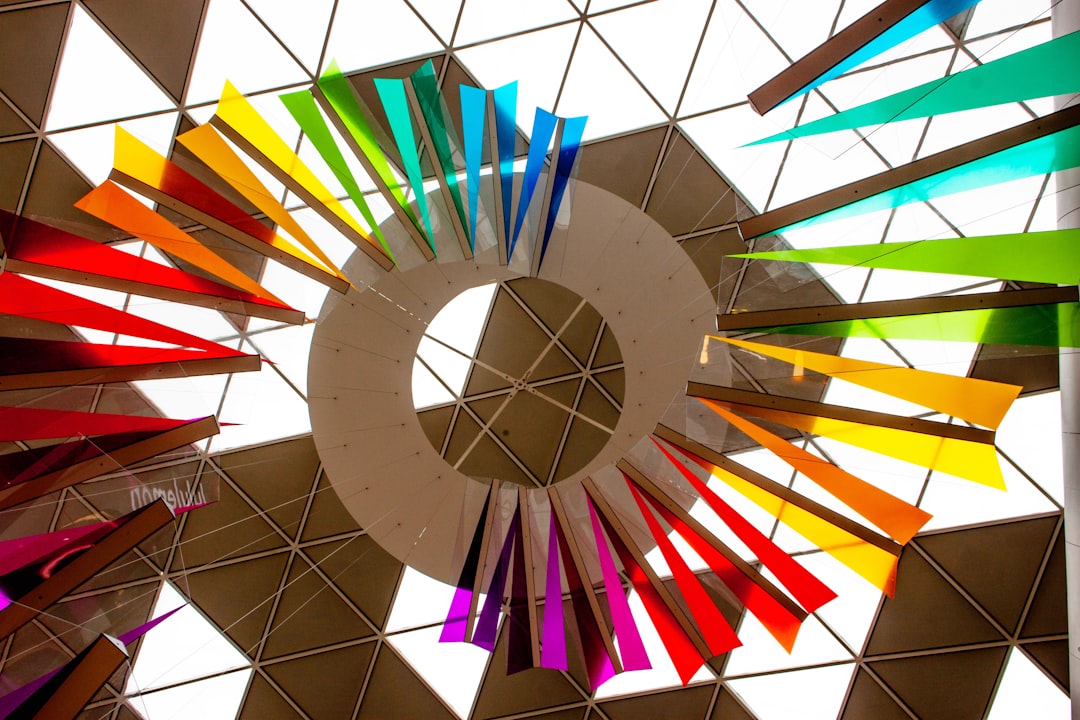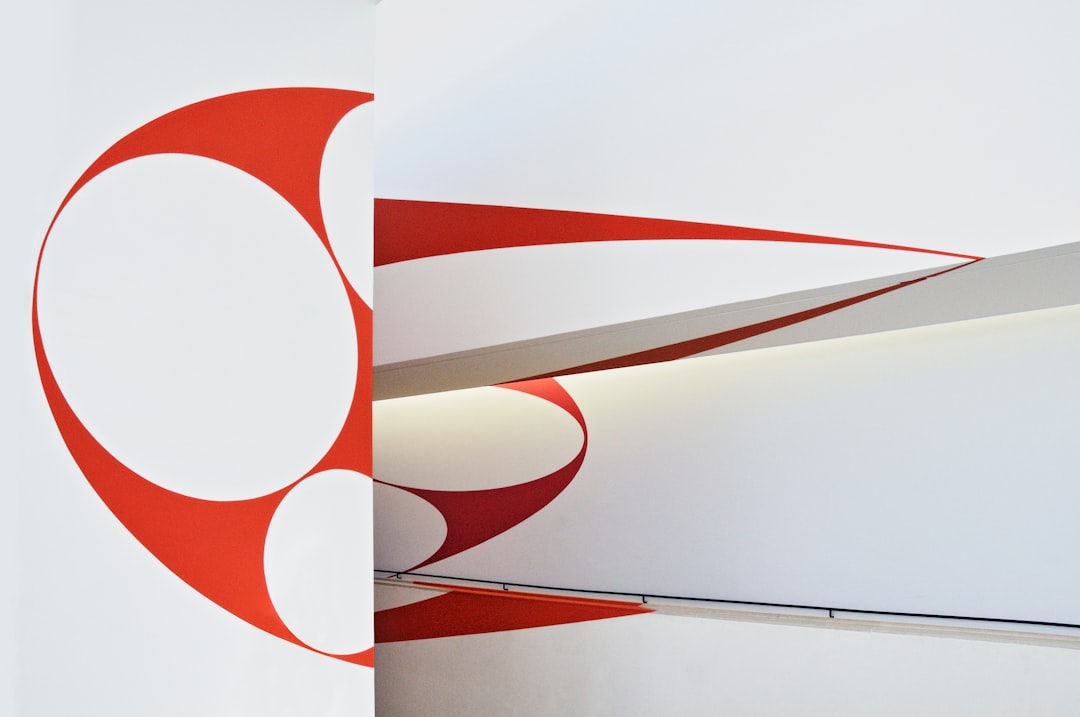

Engage prospects with a scan and streamline customer engagement with FREE QR code marketing tools by Sona – no strings attached!
Create a Free QR CodeFree consultation

No commitment

Engage prospects with a scan and streamline customer engagement with FREE QR code marketing tools by Sona – no strings attached!
Create a Free QR CodeFree consultation

No commitment
QR codes have evolved from a novelty to a strategic powerhouse for telecommunication design firms, bridging offline engagement with online action. As a frictionless and data-rich tool, QR codes boost telecom customer engagement and capture qualified leads without requiring an app download or complex setup.
Many firms still struggle with missed opportunities: high-value prospects interact with marketing assets at events or in the field but often leave no trace, causing gaps in lead pipelines and lost follow-up chances. These issues can slow growth and waste valuable marketing resources. For inspiration on what’s possible, see this QR case study.
Modernizing print collateral, enriching trade show interactions, and enabling immediate digital follow-up at every physical touchpoint, QR code implementation transforms analog processes into scalable, measurable growth engines. Telecommunication design firms are uniquely positioned to use these innovations, turning every campaign into a data capture and conversion opportunity and ensuring qualified prospects enter the funnel at the right time.

Traditional lead capture methods like paper sign-up sheets or untraceable print handouts often result in incomplete records and missed follow-up on high-interest prospects. Firms can lose track of interested but anonymous visitors, leaving valuable business on the table and requiring manual data entry that delays outreach. In a sector where project cycles are complex and buying committees are large, those delays can mean the difference between winning and losing a bid.
QR codes enable firms to turn offline interactions into online conversions, which is essential for achieving predictable, high-value lead generation while reducing data loss and administrative effort. By adding a scan-first pathway to every printed or physical asset, you create a reliable bridge that captures intent in the moment and routes it to your CRM for immediate action.
Advanced QR platforms now automate many of these steps, capturing and syncing visitor information instantaneously. What once required manual, error-prone processes is now handled through real-time connections, which minimizes lost leads and supports faster, more effective lead nurturing. With a platform like Sona QR, you can deploy dynamic codes, unify performance data, and integrate with the tools your team already uses.

Telecommunication design firms operate at the intersection of complex B2B sales cycles and evolving buyer expectations. Physical marketing and field engagement often generate interest but leave engagement invisible and unmeasured. Missing out on high-value prospects due to a lack of immediate digital handoff is a persistent concern, especially when decision makers attend events together, split collateral among colleagues, and revisit options long after initial contact. For telecom-specific strategies, explore Sona QR’s tech and telco resources.
QR codes address these challenges by meeting prospects where they are and giving them a fast pathway to action. Scan-first experiences turn printed materials, signage, or equipment labels into gateways that log intent, capture context, and invite the next step. Instead of hoping a prospect types in a URL or emails later, you allow one scan to bridge the offline-to-online gap. For additional tips, this QR marketing guide covers best practices for campaign success.
These features allow firms to unify distributed sales efforts and physical campaigns, capturing critical visibility and measurable results at every audience interaction. For teams that manage multiple markets or verticals, scan data also surfaces which segments respond to which offers, which informs the next wave of creative and placement decisions.

Telecommunication design firms often default to basic web links, which limits flexibility and measurement. Selecting the right QR format for each objective helps you improve user experience while capturing better data. Static codes point to fixed destinations and do not support edits after printing. Dynamic codes point to a managed URL that can be changed, tagged, and tracked, which is ideal for multi-phase campaigns and materials that may live for months.
The most effective formats include:
Matching format to the objective ensures strong UX and higher conversion. For lead capture and campaign agility, dynamic codes are usually the best choice; reserve static codes for evergreen resources, like a PDF of certifications that rarely change.

Telecommunication design firms have physical presence across many touchpoints: trade shows, municipal meetings, partner events, field operations, and direct mail. Each is a chance to convert interest into measurable engagement and pipeline. The key is to treat every surface and handoff as a potential onramp to your digital funnel.
Placing QR codes strategically across these touchpoints turns passive materials into interactive, trackable assets. You also gain clarity on which audiences and settings produce the best outcomes, which lets you double down on high-yield placements.
Strategic placements turn each physical interaction into a measurable contributor to lead quality and pipeline velocity. Over time, your scan data will reveal high-intent hotspots, which you can prioritize in budgets and staffing plans.

In long B2B buying cycles, engagement signals often go untracked. QR-enabled workflows capture those signals and convert them into revenue opportunities. Thoughtful use cases map to common buyer interactions across awareness, consideration, and decision.
These workflows deliver deeper engagement and actionable analytics while streamlining operations. When codes are unique to each material or location, you can see which services attract specific roles, such as city planners versus network engineers, and tailor messaging accordingly.
Each QR code scan is a high-intent signal: the person is physically present, attentive, and curious. Unlike anonymous web visits, scan data can include context such as the exact asset, location, and time. With the right setup, telecommunication design firms can transform these signals into segmented audiences for precise retargeting and timely outreach.
Begin by deploying unique codes for distinct funnel stages and buyer roles. For example, awareness codes on general brochures point to overview pages, consideration codes on technical one-pagers route to engineering specs, and decision-stage codes in proposals open pricing or timelines. Each scan attaches a clear intent label to a contact or account in your CRM.
For execution details, see Sona’s Playbook titled “Intent-Driven Retargeting: Driving High-Impact Campaigns with First-Party Intent Signals.” With a platform like Sona QR, each code becomes a smart entry point that carries metadata into your marketing stack. You move from guessing at interest to orchestrating next steps based on clear, behavior-driven signals.
QR codes are the connective tissue across offline and digital channels. They give your team a way to see which printed assets work, which in-person moments drive action, and how to continue the conversation after someone leaves your booth or office. Used consistently, they enable multi-touch attribution and improve personalization across the buying journey. For broader tactics, this concise QR marketing guide outlines campaign ideas and measurement tips.
In telecommunication design firms, the most effective integrations reflect where your audiences already engage: industry events, government meetings, construction sites, and targeted mailers. When every asset contains a scannable path, you reduce friction and collect a uniform data stream that powers coordinated outreach.
QR codes serve as the offline onramp to your digital marketing engine. With a centralized platform like Sona QR, you can manage all your codes, monitor performance, and sync scan data with your CRM and ad platforms for coordinated campaigns that span print, events, and digital channels.
ROI suffers when execution is uneven or analytics are ignored. A clear, repeatable process ensures every deployment supports business goals and feeds reliable data into your systems. The steps below translate QR strategy into day-to-day action for telecommunication design firms.
Start by selecting a focused outcome that aligns with a real business priority. Examples include booking site surveys, collecting RFQ details, driving demo requests for your design software, or registering attendees for a standards workshop.
Choose dynamic codes for most marketing and sales use cases. They allow you to update destinations, apply UTM parameters, and collect analytics without reprinting. Use static codes only for truly evergreen resources.
Treat QR design as part of the visual hierarchy of your asset. The code should be scannable at a glance, clearly labeled, and visually integrated with your brand.
Roll out codes where high-intent audiences converge. Prioritize events, proposal packets, lobby signage, and targeted mailers, then expand to fleet and jobsite signage once the core motion is working.
Use analytics to understand what works and where to iterate. Treat each deployment as a learning loop.
Dynamic platforms like Sona QR provide real-time visibility and optimization across every stage, from scan to opportunity creation.
Proving marketing effectiveness is hard when print and events are disconnected from your digital analytics. QR codes convert those analog moments into measurable signals. For telecommunication design teams, the difference is not only counting scans but also attributing scans to lead progression, opportunity creation, and revenue. Sona is an AI-powered marketing platform that turns first-party data into revenue through automated attribution, data activation, and workflow orchestration.
Knowing someone scanned a code is a start, yet it is not enough. You need to understand what happened next: did they fill a discovery form, download a spec sheet, or schedule a site survey? Did that action contribute to a sales conversation or a closed deal? With a connected stack, you can answer these questions and optimize spend accordingly. For deeper strategy, read Sona’s blog post titled “The Essential Guide to Offline Attribution: Maximizing ROI Through Offline Channels.”
Sona QR captures real-world engagement cleanly. Sona.com turns that engagement into insight by unifying data across buying stages, which helps you connect scans to revenue and make QR codes part of a performance marketing system rather than a one-off tactic.
QR codes deliver the best ROI when they sit inside a clear journey and when teams are trained to promote them. Treat them as strategic levers that transform print and in-person touchpoints into measurable conversions. Start small, learn fast, and then scale to more placements and programs.
Choose the practices that align with your media mix and customer journey. For telecommunication design firms, that often means conferences, proposals, mailers, and field signage. Ensure every scan unlocks a practical next step, not just another brochure page.
Firms that prioritize these best practices turn overlooked interactions into qualified pipeline within hours. With Sona QR, you can generate and track your first codes for free, integrate with your CRM, and scale confidently as results compound.
QR codes are no longer a novelty. For telecommunication design firms, they are a practical strategy to turn every physical touchpoint into a digital entry point and every moment of interest into measurable action. By standardizing scan-first experiences across print, events, and field operations, you eliminate missed leads, reduce manual data loss, and capture engagement signals that power intelligent marketing.
The payoff is a connected customer journey that moves prospects from awareness to conversion while delivering actionable data at each step. Firms that deploy QR codes systematically, measure performance, and orchestrate follow-up through their CRM gain a durable advantage in speed, accuracy, and client satisfaction.
If you are ready to modernize lead capture, start by equipping your highest-traffic assets with dynamic QR codes and clear, benefit-oriented CTAs. With Sona QR, you can create and manage codes, attribute performance, and sync results to your CRM in minutes. Start creating QR codes for free, learn from the data, and scale the placements that drive real pipeline growth.
QR codes have transformed telecommunication design firms from traditional lead capture methods into dynamic, data-driven growth engines. Whether it’s acquiring qualified leads, enhancing client engagement, or streamlining project follow-ups, QR codes enable instant, mobile-friendly interactions that provide real-time insights—turning every design asset and campaign into a powerful conversion tool. Imagine instantly knowing which proposals or portfolios spark the most interest and being able to refine your approach on the fly.
With Sona QR, telecommunication design firms can effortlessly create dynamic, trackable QR codes that update instantly without reprinting, linking every scan directly to actionable data and revenue opportunities. No more guesswork or missed chances—just smarter, more efficient lead generation and client relationship management.
Start for free with Sona QR today and transform every scan into a meaningful connection, a qualified lead, or a closed project.
Best practices include using dynamic QR codes for flexibility and tracking, placing unique codes on each asset, adding clear CTAs, integrating with CRM for automated follow-up, testing for scannability and accessibility, and deploying codes across high-impact touchpoints like events, proposals, and field signage.
They improve customer experience by implementing QR codes that enable frictionless access to digital content, streamline onboarding and service requests, provide real-time information through scans, and create seamless offline-to-online engagement paths.
Innovative uses include embedding QR codes in brochures and proposals to access case studies or RFQ forms, using QR codes on fleet vehicles and jobsite signage to engage communities, and employing QR-enabled badges and booth signage for smart event check-ins and personalized content routing.
They contribute by turning physical marketing assets into measurable digital engagement points with QR codes, enabling lead capture and segmentation, providing real-time analytics for optimization, and integrating scan data into CRM systems to drive precise follow-up and pipeline growth.
Key services include designing and deploying QR code campaigns, customizing QR code formats for use cases like lead capture and client onboarding, integrating QR data with marketing and sales platforms, and providing analytics to track engagement and optimize multi-channel marketing efforts.
Use Sona QR's trackable codes to improve customer acquisition and engagement today.
Create Your FREE Trackable QR Code in SecondsJoin results-focused teams combining Sona Platform automation with advanced Google Ads strategies to scale lead generation

Connect your existing CRM

Free Account Enrichment

No setup fees
No commitment required

Free consultation

Get a custom Google Ads roadmap for your business






Launch campaigns that generate qualified leads in 30 days or less.
